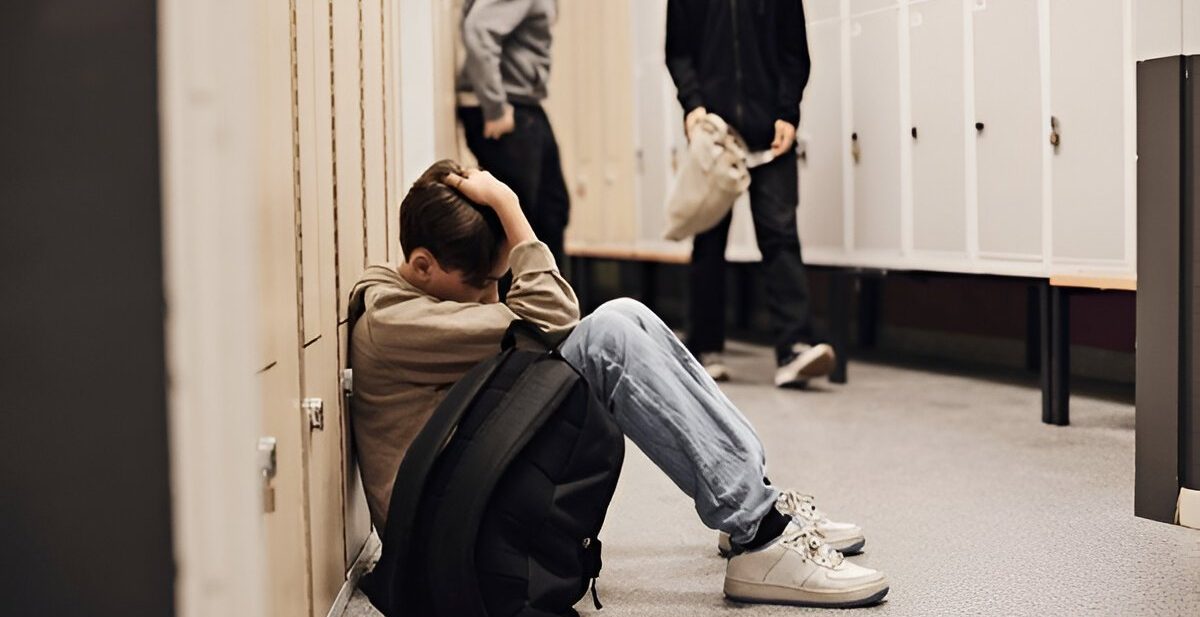- March 7, 2025
- by Shalini Murmu
- Avoidant Personality Disorder, Uncategorized
- Understanding Avoidant Personality Traits
- Role Of Childhood Bullying In Developing Avoidant Personality Traits
- Breaking The Cycle: Healing From Childhood Bullying
- Avoidant Attachment Signs
- Types Of Avoidant Attachment Signs
- How To Overcome Avoidant Attachment Patterns
- Break Free From Isolation – Help Is Within Reach!
The time of personal growth is when we acquire the skills to navigate relationships, cultivate self-esteem, and establish our sense of security in the world. But when bullying interferes with this essential journey, it goes beyond causing momentary discomfort. It fundamentally alters self-image, creates a profound fear of rejection, and transforms how a person engages with the world for many years ahead. What might be dismissed as “just kids being kids” can subtly influence an individual’s capacity to trust, take chances, and welcome new opportunities, frequently resulting in enduring patterns of social withdrawal, self-doubt, and avoidance. The question is, how profound are these scars, and how can we mend them before they dictate our identities? Let us delve into the concealed effects of childhood bullying and the enduring mark it leaves on personality development.
Understanding Avoidant Personality Traits
Avoidant personality traits manifest as heightened sensitivity to criticism, social withdrawal, persistent self-doubt, and a profound fear of rejection or failure. Individuals exhibiting these traits frequently shy away from social interactions, personal relationships, and new experiences, apprehensive that they will be judged or humiliated. They yearn for connection but find themselves immobilized by the fear of ridicule or disapproval.
Although some degree of social anxiety is normal, chronic avoidance is more than “being shy”. It fundamentally influences a person’s identity, resulting in significant emotional distress and lost opportunities in both personal and professional areas.
Role Of Childhood Bullying In Developing Avoidant Personality Traits
- Repeated rejection becomes internalized
Children who endure bullying face relentless rejection from their peers. Whether they are ridiculed for their looks, intellect, or behaviors, the ongoing exclusion leads them to believe that there is something fundamentally wrong with them. Gradually, they internalize these damaging messages, persuading themselves that they are unworthy of love, friendships, or success.
This negative self-image becomes deeply embedded and carries into adulthood, where they may hesitate to pursue relationships, seek employment, or engage in any circumstance that might expose them to criticism.
- Fear of judgment and criticism intensifies
Imagine being mocked every time you attempt to speak in class or engage in conversation. Over time, children who are bullied discover that social interaction equates to pain, prompting them to withdraw into themselves. Even as adults, they may feel as though they are under constant scrutiny, with others poised to catch them making a mistake or saying something embarrassing. This heightened awareness of potential embarrassment compels them to avoid social situations entirely.
- Trust issues and emotional guarding
Bullying frequently involves acts of betrayal. Old friends transforming into bullies, teachers not validating their emotions or requests for assistance, or care-takers downplaying their pain, are a few to name. Such betrayals instill a belief that trusting people poses a risk. As they enter adulthood, there can be difficulty in expressing their feeling freely, fearing they may face further rejection or embarrassment.
- Social isolation becomes a coping mechanism
Initially, shunning social interactions offers a fleeting sense of relief. They begin to have a notion that, no one can inflict harm if they choose not to engage at all. The more a person begins to withdraw themselves, the tougher it is for them to re-integrate with people. What begins as a self-protective measure ultimately solidifies into a persistent pattern of avoidance, making even positive social encounters daunting.
- Perfectionism as a defense mechanism
Most of those who have experienced bullying develop perfectionistic traits. They come to believe that if they are perfect, they will not be victims of mockery again. However, this frequently turns out to be counterproductive, since chasing after perfection brings crippling self-doubt, delays, and avoidance of chances due to a fear of failure.
Breaking The Cycle: Healing From Childhood Bullying
Although avoidant personality traits may seem profoundly embedded, they do not signify a perpetual state. Recovery is attainable, and it commences with acknowledging the roots of these behaviors. Here are some steps toward healing:
- Therapy and professional support:– Cognitive-behavioral therapy (CBT) assists individuals in confronting negative self-perceptions and reinterpreting past events. Trauma-informed therapy can also address the emotional scars left by bullying.
- Gradual exposure to social situations:– Rather than total withdrawal, gradually participating in social engagements can help restore confidence and demonstrate that not every encounter will lead to mockery.
- Self-compassion and inner dialogue shift:– Acknowledging that childhood bullying does not determine one’s value is essential. Building self-kindness and incorporating affirmations can play a role in altering negative self-dialogue into healthier, more encouraging outlooks.
- Building a support system:– Establishing empathetic and emotionally secure friendships can alter one’s perception of relationships and trust. Building relationships with others who have triumphed over challenges can be incredibly motivating.
Avoidant Attachment Signs
Avoidant attachment develops when someone learns, consciously or subconsciously that depending on others leads to pain, disappointment, or feeling rejected. This way of thinking often comes from experiences in childhood, like being bullied, neglected, or having feelings dismissed. People showing avoidant attachment signs usually push down their feelings, have a hard time trusting their acquaintances, and keep others at a distance, even if they really want to connect.
- Emotional detachment – A habit of holding back feelings or having a tough time being emotionally open, which makes forming deep bonds challenging.
- Fear of dependence – Feeling uneasy about leaning on others, even when it’s clear they could use some help.
- Extreme independence – A big preference for doing things solo, sometimes leading to feeling lonely.
- Discomfort with emotional intimacy – Experiencing a sense of being overwhelmed or stifled in close relationships.
- Pushing people away – Ending connections or pulling back when emotions start to run high.
- Hyper-focus on perceived rejection – Believing that others will eventually walk away or reject them, which causes them to distance themselves first.
- Difficulty expressing needs – Hesitating to ask for help or support because they fear looking weak.
If these avoidant attachment signs sound familiar, it is not a lifelong label, there’s always a possibility for healing and growth. Plus, getting to know the different avoidant attachment traits can help you understand how avoidance shows up in your life.
Types Of Avoidant Attachment Signs
Avoidant attachment isn’t just one thing, it can look different for everyone in terms of severity and effects. Here are the key types of avoidant attachment signs that can come from experiences such as childhood bullying:
- Dismissive-Avoidant Attachment Characteristics: People with this style often downplay their emotions, shy away from close emotional proximity, and take pride in their independence. They usually find it hard to build deep connections and tend to overlook their own needs. A child who feel that their emotions are overlooked or punished (like being teased for showing sadness) may start to shut down emotionally to shield themselves. They may find it tough to commit, avoid serious discussions, and feel uneasy with displays of affection.
- Fearful-Avoidant Attachment (Anxious-Avoidant) Characteristics: This attachment style is characterized by a strong desire for closeness but also a deep fear of being rejected or abandoned. It leads to a cycle where they want love but are also scared of it. If a child goes through both bullying and inconsistent emotional support from caregivers, they learn that people can’t rely on them. They yearn for connection but are afraid of getting hurt. They might display hot-and-cold behavior in relationships, push others away while desiring intimacy, and deal with significant anxiety about being left behind.
How To Overcome Avoidant Attachment Patterns
Identifying avoidant attachment signs and the various types is the first step toward healing. To move past avoidant tendencies, it’s all about self-awareness, seeking therapy, and making a conscious effort to confront deep-seated fears. Here are some helpful strategies:
- Therapy – Partnering with a therapist, especially one who focuses on attachment theory, can help reshape unhealthy beliefs about relationships.
- Gradual Vulnerability – Taking baby steps to open up to trusted people can help restore trust in others.
- Self-Compassion Practices – Understanding that avoidance comes from past hurt, not personal shortcomings, can lessen self-criticism.
- Challenging Avoidant Patterns – Actively engaging in relationships, even when it feels uncomfortable, can be a great way to break the habit of emotional distancing.
Break Free From Isolation – Help Is Within Reach!
Avoidant personality traits can quietly take over people’s lives, resulting in severe social isolation and emotional pain. But you don’t have to go through this alone. At North America Behavioral Health Services, expert help is just a phone call away. Our experts create customized treatment plans to help you regain confidence, reconnect with others, and take back control of their lives.
Do you know someone dealing with social withdrawal? The right support can truly transform lives. Find professional help with us and take that important first step toward healing.
Call us for a better tomorrow!













